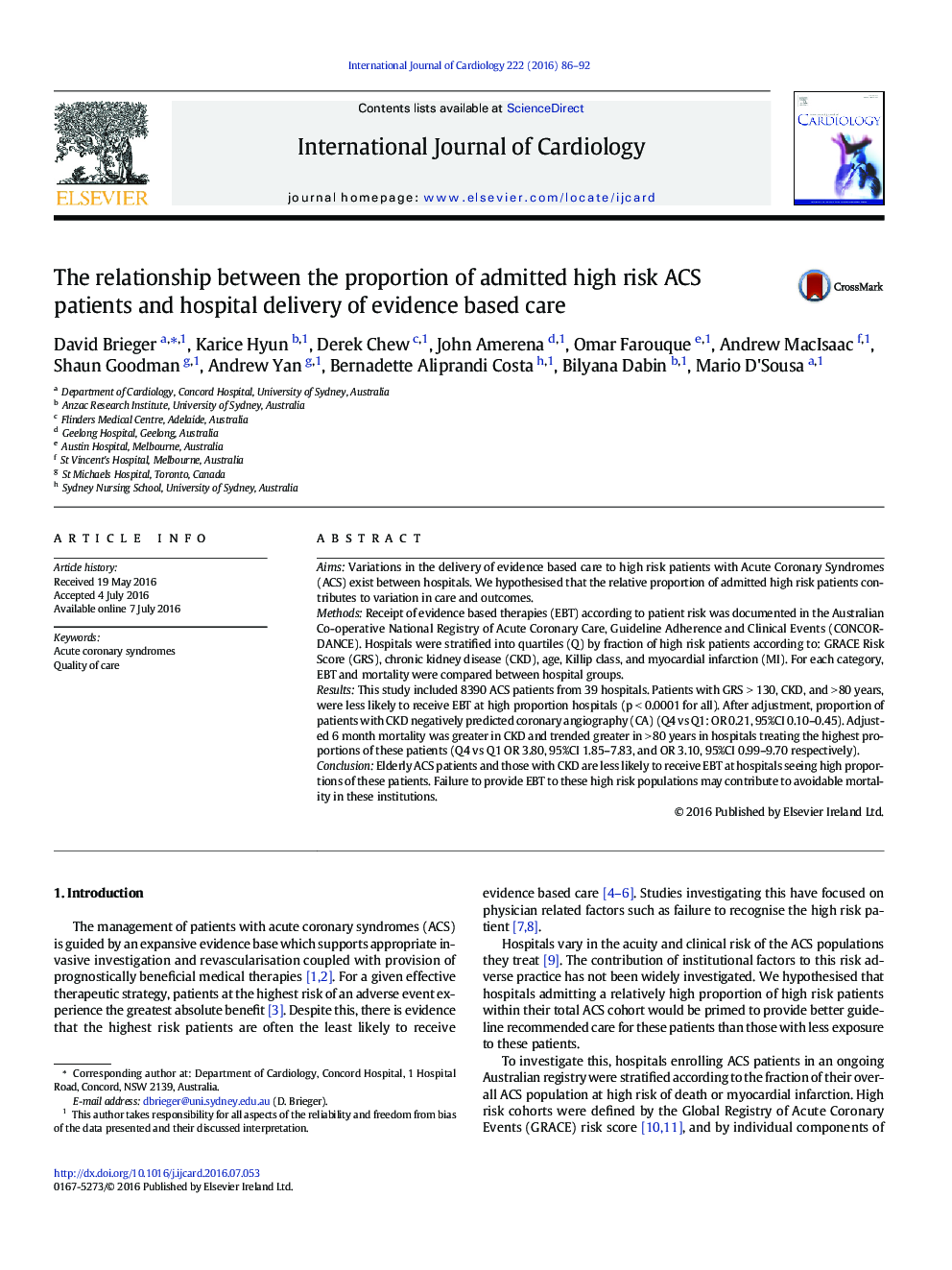| Article ID | Journal | Published Year | Pages | File Type |
|---|---|---|---|---|
| 5962605 | International Journal of Cardiology | 2016 | 7 Pages |
AimsVariations in the delivery of evidence based care to high risk patients with Acute Coronary Syndromes (ACS) exist between hospitals. We hypothesised that the relative proportion of admitted high risk patients contributes to variation in care and outcomes.MethodsReceipt of evidence based therapies (EBT) according to patient risk was documented in the Australian Co-operative National Registry of Acute Coronary Care, Guideline Adherence and Clinical Events (CONCORDANCE). Hospitals were stratified into quartiles (Q) by fraction of high risk patients according to: GRACE Risk Score (GRS), chronic kidney disease (CKD), age, Killip class, and myocardial infarction (MI). For each category, EBT and mortality were compared between hospital groups.ResultsThis study included 8390 ACS patients from 39 hospitals. Patients with GRS > 130, CKD, and > 80 years, were less likely to receive EBT at high proportion hospitals (p < 0.0001 for all). After adjustment, proportion of patients with CKD negatively predicted coronary angiography (CA) (Q4 vs Q1: OR 0.21, 95%CI 0.10-0.45). Adjusted 6 month mortality was greater in CKD and trended greater in > 80 years in hospitals treating the highest proportions of these patients (Q4 vs Q1 OR 3.80, 95%CI 1.85-7.83, and OR 3.10, 95%CI 0.99-9.70 respectively).ConclusionElderly ACS patients and those with CKD are less likely to receive EBT at hospitals seeing high proportions of these patients. Failure to provide EBT to these high risk populations may contribute to avoidable mortality in these institutions.
